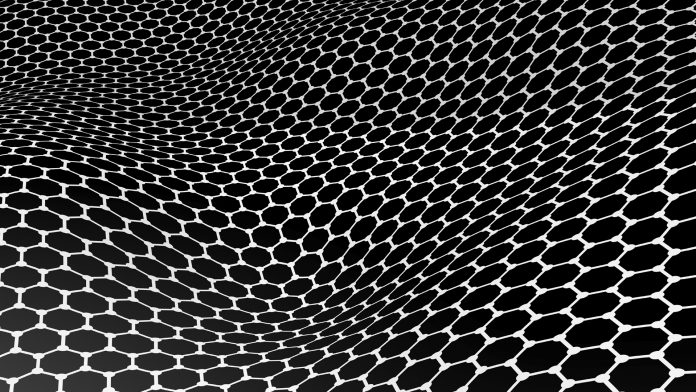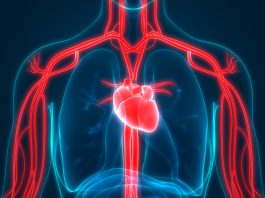Nanomaterials and functionally graded materials arguably play a key role in increasing the strength to weight ratio of components in order to reduce CO2 emissions.
The European platform for Advanced Materials (EUMAT) is the leading forum to contribute to the debate about the key role of advanced materials and technologies in essential materials domains. Iinitiated in 2004, EUMAT is recognised as the Materials Technology Platform and partner of the EU Commission since 2013 (after re-assessment by the European Commission). EUMAT is driven and managed by active members from academia, research and industry.
The Innovation Platform speaks to Winfried Keiper, Amaya Igartua, and Marco Falzetti about how materials can contribute to the reduction of CO2 emissions in order to help make Europe the first climate neutral continent.
To begin, what can you tell us about EUMAT’s mission?
EUMAT’s major outputs are the Materials Strategic Research Agenda; the technical exchange and co-operation between members; the activities in Working Groups highlighting challenges and topics for new calls; and proposing new project ideas; as well as publications, statements and position papers about advanced materials. EUMAT promoted the creation of the Alliance for Materials (A4M), the umbrella organisation of platforms and networks interested in materials development, acting as A4M secretariat. Our mission in detail is as follows:
- To promote the leading global position and competitiveness of the EU technology in the area of advanced engineering materials,
- To promote the consolidated and unified European policy governing research, development and innovation in this area,
- To ensure optimum involvement of industry and other important stakeholders in establishing European research and development priorities.
Hydrogels
Hydrophilic gels, often referred to as ‘hydrogel’, are 3D networks that are able to absorb large quantities of fluids (both water and biological) as a results of its hydrophilic structure.1 As a result, hydrogels are commonly used for biomedical purposes. At the same time however, with synthetic polymer-based hydrogels, the hydrogels structure can be controlled. This includes factors such as its swelling ability, stability and biodegradability. They are therefore regularly used in the following applications:
- Carriers/matrices for cells in tissue engineering
- Delivering vehicles for both drugs and biomolecules,
- Self-healing materials.
EUMAT targets both entirely new materials and the innovative use of existing materials (based on good understanding of material requirements and degradation mechanisms), as well as modification of existing materials for new applications. EUMAT’s Strategic Research Agenda (SRA) puts together the mid- and long term research directions and needs for advanced engineering materials and technologies, providing guidance to materials research policies of the EU.
On the side of the European Commission, EUMAT as a European platform is linked to DG Research and Innovation, Directorate F – Prosperity, Unit F4 Materials for Tomorrow. Through our working groups, we promote and encourage a wide range of materials application domains; to name only a few:
- Developments in materials to improve health and quality of life,
- Materials that help to minimise the impact of climate change,
- Materials supporting clean mobility,
- Smart materials for digitised industry and a more resilient society.
What is the importance of materials technology in relation to sustainable and responsible societal development, and how has this progressed over recent years?
Materials are at the heart of our daily life and they guarantee the functioning, long term durability, safety, and environmental compatibility of all the devices, machinery, and services around us. The so-called conventional materials (metals, concrete and plastics) have undergone revolutionary developments in recent decades, such as new composites, smart coatings, biomimetic materials (such as surface texturing and hydrogels), and light alloys to reduce weight and CO2 emissions. Sustainability, circularity, reduced volume and mass, reuse, and rechannelling of used materials are key principles in these developments. However, advanced materials and their applications reach from nanotechnology to ceramics, biomaterials and health products; to the latest energy materials for reducing our carbon footprint. New developments in materials also enable technologies in the digital world – for example, the touchscreen mobile phones of today would be completely impossible without major progress, in recent years, of touch-sensitive and electrically active transparent coatings.
What role do advanced materials play in key EU developments, such as the European Green Deal and the digital age?
EUMAT recognises the central role and importance of sustainable, ecology-friendly growth, and contributes actively to the EU Green Deal. On a technology platform level, we write papers, a memorandum, and position statements explaining the need, necessity, and the grand opportunities for materials research in the drive towards a green Europe. Meanwhile, in EUMAT’s working groups, several related activities are in place. The Working Group on Life Cycle, Impacts, and Risk works in the field of life cycle analysis (LCA) and ecological footprints of innovation in products, advanced materials, and new technology.
EUMAT is also working in materials development to enhance the efficiency of renewable energy generation and storage and developing light materials in order to reduce energy consumption. Nanomaterials and functionally graded materials have a key role to increase the strength to weight ratio of components to reduce CO2 emissions. Friction reduction (particularly in mobility) is the core element for improved energy efficiency. Results provided by the low friction powertrain demonstrated that engine friction losses offer a reduction potential of 30%. This would translate into a fuel consumption reduction of 0.94l/100km or 12.1%, along with additional reduction potential (such as for transmission, wheel bearing, and auxiliary units) of the powertrain. In Germany alone, this will represent a reduction of 2.2m tonnes of gasoline, involving 6.92m tonnes less CO2 emissions.3
Moreover, EUMAT looks into the technology of circular processing and manufacturing: technologies such as additive manufacturing for zero waste feeding, sustainable mining, waste and friction reduction at design phase, resource efficiency and reuse of waste; and in particular substitution of critical raw materials and of materials of concern. Ideally, bio-based, renewable materials should comprise a sizeable portion of the circular economy. At the same time, EUMAT pursues, with the Working Group members, efforts towards proper, viable circular business cases: new circular business models are needed with short product loop closure, modular products, shared product ownership, product life extension, repair or re-manufacturing by design. The development of new, advanced sensors (some embedded, some energy-autonomous, and with communication capabilities) is another contribution to the circular economy – they will help to monitor products within their life cycle and enable rerouting, end-of-life measures, and reuse.
We have a recently updated Working Group on Advanced ICT and Quantum Materials, looking at the materials base for the digital future. Advances in microelectronics, in touch-sensitive surfaces such as for mobile phones, in sensors and energy harvesting are the basis for today’s digital world; industry-grade materials for quantum devices will enable the next generation of sensing, secure communication, and computing. Eumat working groups operate by organising and attending brokerage events and workshops; by distributing event information to the members; by co-operation with appropriate sister organisations and initiatives; and by following, tracking, and distributing incoming calls for proposals from HORIZON 2020/Europe, M-era.Net, ERA-MIN and others.
Compared to other international advanced material markets, what are some of the strengths and advancements Europe offers that other regions do not?
We believe strongly in the relevance and impact of materials research, in particular given its cross-cutting nature and effects. Europe-wide research and advances in materials are shared through technology platforms, materials databases with a common ontology, and other means of communication. European materials research is cross-cutting in several ways:
- Bringing together different application fields,
- Uniting materials research efforts across the EU,
- Transferring solutions of one societal problem to other industries with other societal challenges.
Europe-wide materials research and innovation, either sponsored by public funding as in Horizon 2020 or by industry funding, is one of the great assets that we have in Europe today. Overseas cooperation with many countries can also be found under M-era.Net schema.
What are some of the main limitations of European advanced materials research and development, and how can this be approached?
We recognise the well known weakness of transforming knowledge into innovation and new products. The transition from research to market is not a strong point of the European research and industrial ecosystem. The proverbial ‘valley of death’ is sadly the end of many promising research findings, and the same is the case with advanced materials. Measures for risk sharing a mitigation for commercial use of research findings are needed – as well as a change in ‘thinking new business’. To facilitate this approach new instruments has been created by the European Commission, such as the Enhanced European Innovation Council (EIC) pilot to support researchers and innovators developing high risk, breakthrough innovations with the potential to create new markets and boost jobs, growth and prosperity in Europe.4
Another limitation in this field is a certain lack of acceptance of advancements in research, development and innovation on the part of the citizens of Europe. Sometimes this is just driven by lack of knowledge about technologies in general, and materials potential in particular. It is therefore a challenge for the materials community to explain the role of advanced materials in the EU’s Green Deal, reducing CO2 footprints, energy, digital, sensors, medical domains and sustainable, eco-friendly wealth-creating economies. We must not ignore risks and concerns about new materials and technology; but if we want successful results, we need to transmit in a comprehensive way and get the approval of any possible side effects, not only from active customers but also from citizens, voters and the workforce. To do this, methods of co-creation and engagement of citizens need to be developed and applied in step with technology advances. We need to involve stakeholders, industry and their employees as well as customers, users and end users: the citizens of Europe. We must involve all groups of society in defining technological solutions and their benefits for society – without ignoring risks, dangers, possible side effects; and citizens’ concerns.
In this sense, we believe in the essential contributions of advanced materials, not only to solve technological challenges, but in a far wider sense, to benefit the wellbeing of European citizens and the definition of a long term vision for a sustainable new economy with social dimensions.
References
3 a) “Tribology in Germany”, www.gft-ev.de
4 https://ec.europa.eu/programmes/horizon2020/en/h2020-section/european-innovation-council-eic-pilot
Dr Marco Falzetti, Winfried Keiper and Amaya Igartua
European Technology Platform for Advanced Engineering Materials
and Technologies
www.eumat.eu/en
Please note, this article will also appear in the first edition of our new quarterly publication. Subscribe to our updates for free here.









